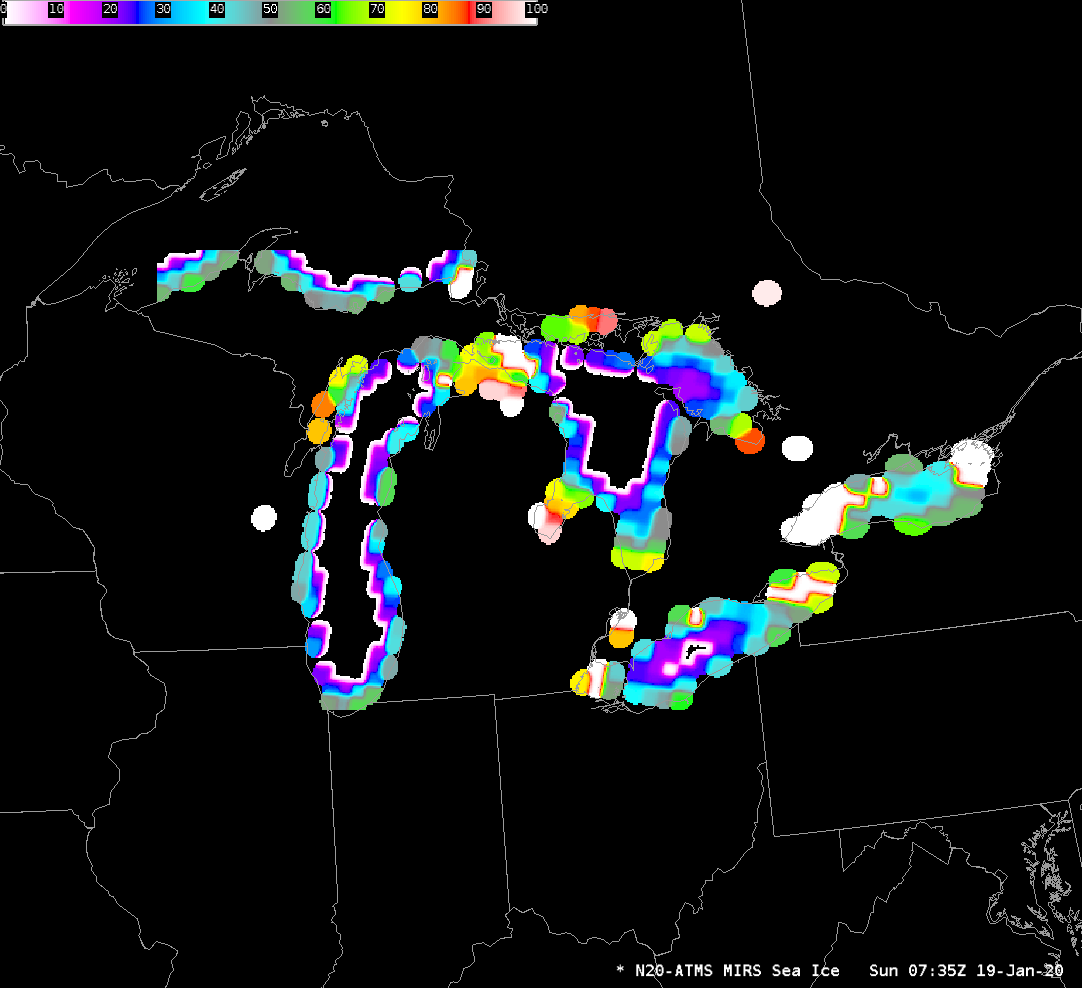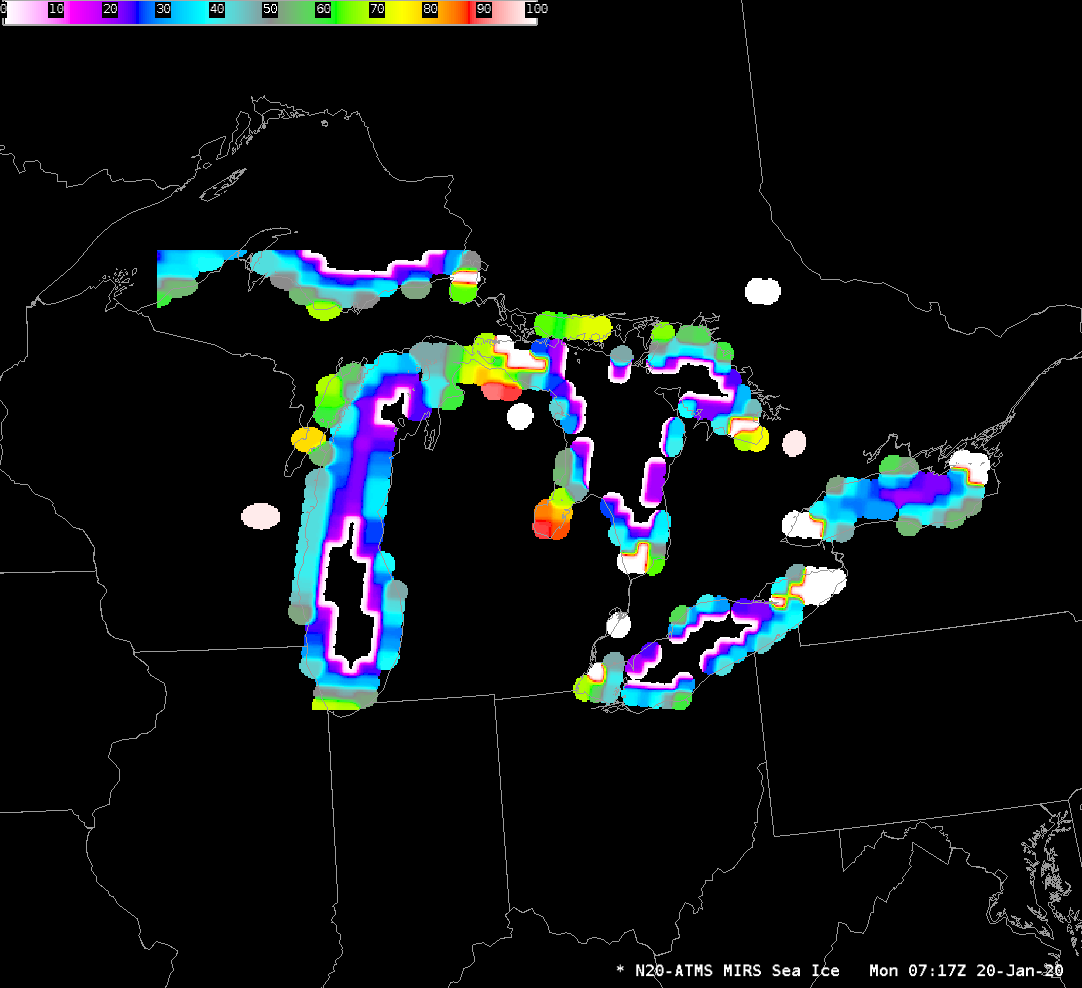MIRS Ice Concentration Products over the Great Lakes

MIRS Lake Ice Concentration (as a percentage) from NOAA-20 ATMS at 0735 UTC on 19 January 2020 (Click to enlarge)
CIMSS is now providing via LDM MIRS Lake Ice Products over the Great Lakes. These data are created using the Community Satellite Processing Package (CSPP) Software and NOAA-20/Suomi-NPP ATMS data downlinked at the Direct Broadcast Antennas in Madison WI. Imagery is shown above from 0735 UTC on 19 January 2020; the image below is from 0717 UTC on 20 January 2020, from NOAA-20, about 24 hours later, and then from 0808 UTC on 20 January 2020, from Suomi NPP (although it is labeled as NOAA-20). A great benefit of these microwave products is that they are not affected by persistent cloud cover that is common over the Great Lakes in winter.

MIRS Lake Ice Concentration (as a percentage) from NOAA-20 ATMS at 0717 UTC on 20 January 2020 (Click to enlarge)

MIRS Lake Ice Concentration (as a percentage) from NOAA-20 ATMS at 0806 UTC on 20 January 2020 (Click to enlarge)
Ice concentration estimates from microwave are very strongly influenced by view angle. Make certain in your comparisons (if you are trying to ascertain changes in lake ice coverage during Lake-Effect Snow events, for example) that you understand this! If the footprint sizes are similar, a comparison to different passes is valid; if the footprint sizes differ, the effects of view angle must be considered. Orbital paths can be viewed here (NOAA-20 it passed right over Lake Erie at 0722 UTC on 20 January; Suomi-NPP passed over Duluth at 0812 UTC on 20 January). In the two examples above, note how ice cover estimates differ over Lake Ontario. In the later example, from ATMS on Suomi-NPP, Lake Ontario is far closer to the limb; the ATMS footprint is much larger and the estimate of lake ice concentration is affected. This toggle compares the VIIRS Day Night band image to the ATMS observations; Lake Ontario is close to the limb for NPP’s pass over western Lake Superior at this time.
For instructions on how to access these data, please contact the blogpost author. Many thanks to Kathy Strabala and Lee Cronce, CIMSS, for their work in making these data available. Click here for short video explaining MIRS Ice Concentration).
Added: A consequence of the relatively poor resolution of ATMS (compared to, say, AMSR-2 on GCOM) is that a footprint in the Great Lakes will often not be over only water or over only land. A mixed surface (land and water within the ATMS footprint) means that the ice concentration algorithm will struggle to interpret the signal and reach the right solution. Best resolution from ATMS occurs near the sub-satellite point (from 15-50 km, depending on the frequency), and that’s where this product give the best information. (Thanks to Chris Grassotti, NOAA/CISESS for this information)

